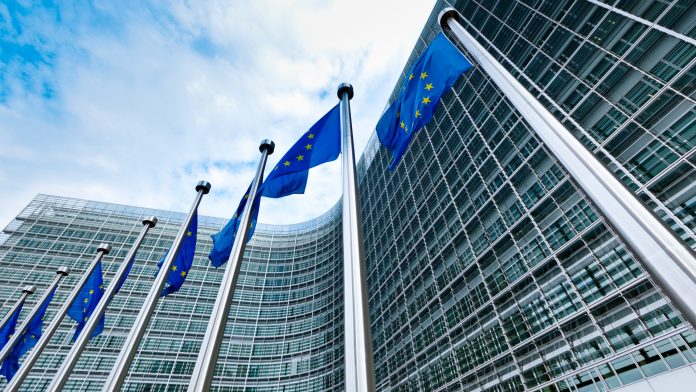Vice President of the European Commission spoke about the importance of regenerating Europe at the Horizon Europe ‘New Parliament, New Commission, new agenda’ event.
In September 2019, we attended the Horizon Europe ‘New Parliament, New Commission, new agenda’ event in Brussels. The event offers an opportunity for the wider European R&I community to debate the right strategy and ambitions for Horizon Europe. At the beginning of the event, Vice President of the European Commission, Jykri Katainen, led a panel discussion on regenerating Europe.
To begin, Katainen said: “When we started with this Commission, the circular economy was just a marginal phenomenon in the commission, and it was not that widely discussed in the outside world. As a result, this big change is a big achievement. The circular economy is reforming environmental forces; however, it is a profound and a very strong part of our single market strategy because there is no circular economy without a well-functioning market. That’s why the circular economy is a part of our central market. Also, the circular economy is one of the main areas where we have design and industrial opportunities.
Therefore, it has been incorporating different policy areas because we believe that there will be two mega trends in the world economy in the upcoming years: circular economy and Artificial Intelligence.”
Katainen continued: “The first version of the circular economy plan included regulation which will promote organic fertilisers into market. We have ways to test what will force Member States to recycle waste much better than they do now. We had last week’s strategy, and all these things have been done together with private sector. The circular is a scalable and sustainable new version of marketing; that’s why we have to do whatever we should do, and we have to make this together with stakeholders, including the private sector, because we need to design our policies correctly.”
The moderator then asked Katainen that from a leadership perspective, what were the greatest frustrations and/or barriers stopping progress in the last five years. Katainen replied: “The biggest source of frustration comes from the fact that less than 12% of all materials can be recycled. However, we can increase the amount of material which is being recycled by creating a more favorable regulatory environment for recycling businesses.
One of the main things which I am personally very enthusiastic about is creating quality standards for packaging plastics. This is because there are currently plenty of qualities in plastics and we can recycle plastics as much as we want to, but you cannot mix different qualities with either of them. Therefore, once we manage to create the European standard for packaging plastics, it will explode. The package plastic recycling is just one of the examples of policy and what we have been doing, and even though there are aspects that may frustrate people, I still believe that there are more opportunities.”
Bringing national agendas along with European ambitions
The conversation then moved on to the discussion of the speed of the Member States, and whether or not it has been a difficult experience to bring national agendas along with European ambitions in the circular economy and industrial policy: “There are certain areas where public authorities decisions are needed by the Member States. For instance, when we talk about recycling, there are countries who do it well already and then there are those who haven’t even started.
Now, we are finding legislation in place. Therefore, we don’t need to ask the Member States anymore whether they want to recycle more materials or not. This is because there is European law which we can enforce in our business.
“I would say that the biggest drivers behind the circular economy development are the businesses itself. This is because in many countries, industry has understood that if they want to improve productivity and profit making, they must change the business model. The role of the public sector is not the most important because what businesses is doing is even more important. Additionally, another very important factor/driver is the consumers expectations. Consumers are demanding much more from companies but also from the local authorities. In my opinion, these are the most remarkable factors. We as European regulators must understand what to regulate, what not to regulate, and how to regulate, because otherwise we will not be able to get a properly functioning circular economy.”
Following on from this, Katainen was asked to share his thoughts on his recommendations for the next Commission: “One concrete issue, which I hope the next commission would conclude is to create taxonomy for sustainable finance. We have been working on this and there is a public consultation going on 13 September, and after that commission will draw conclusions.
This is one of the single biggest pieces of legislation or division, which will have a tremendous impact to the community. For example, in the financial sector there are many banks and other financial institutions that have the multi European interpretation of what is sustainable and what is not. Now, we are very close to making a switch again. There are plenty of labels, or classifications in the market, however consumers and investors are a little bit confused because there are too many of them. That’s why they’ve said that would be extremely helpful if there was a European wide taxonomy. I’m pretty sure that if we managed to get it right, then the other ones will enable the European standards to become a global standard.”







